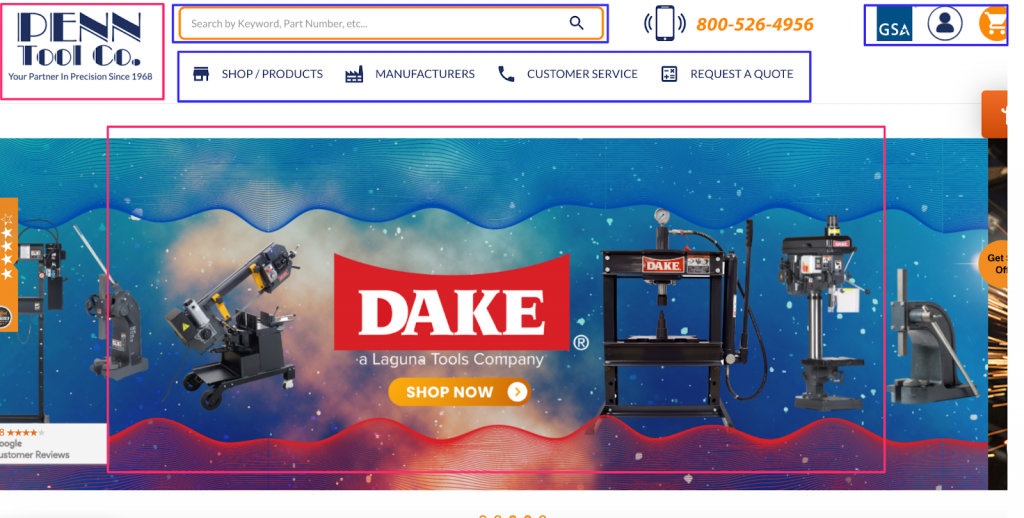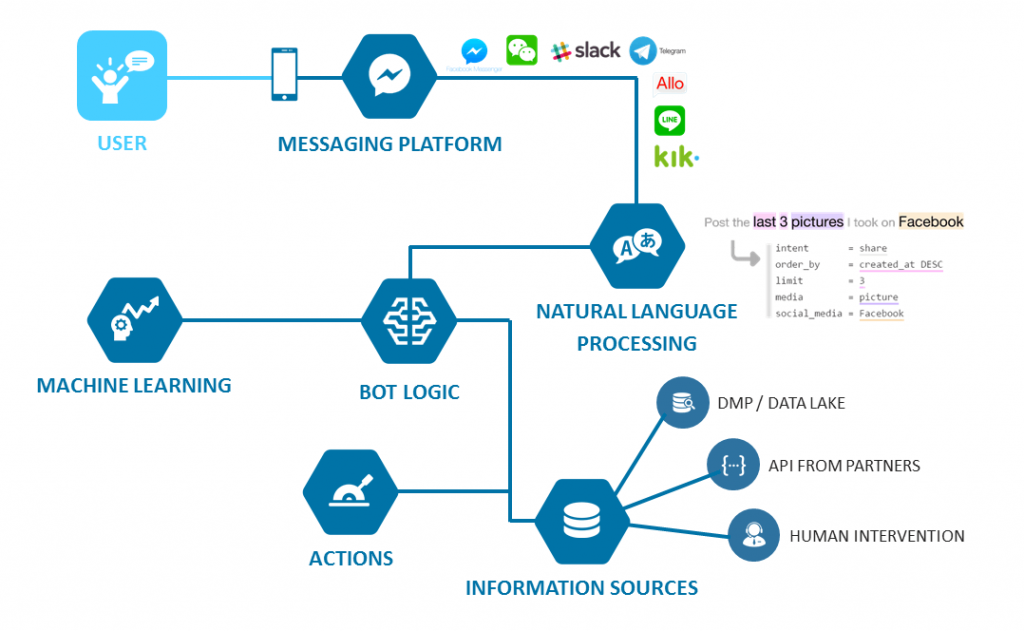The phrase “the more you know, the more you grow” is as accurate for the business world as it is for life. Knowledge has always equaled power, and for ecommerce businesses, these adages continue to hold.
The more information you have on your customers and how they interact with your brand, the better you’ll be able to optimize the ecommerce user experience and boost your conversions. Thankfully, we live in a data-driven age where businesses have access to more customer information than ever before.

With the power of this data on your side, your task is made that much simpler. You can understand who your audience is, what they want, what they don’t want, and exactly how they interact with your website. But how can you leverage that data to increase your ecommerce conversions? Read on to find out.
What Constitutes a Conversion?
When someone hears the word “conversion,” they likely believe it means someone is coming to your ecommerce website and making a purchase. This is true to an extent. Closing sales is one form of conversion, and some might argue it’s ultimately the most essential definition of the term. But conversion can mean many different things depending on what you’re trying to accomplish.
While it’s true that “conversion” can mean sales, there are several marketing initiatives that seek to accomplish other tasks. When someone takes that desired action, it’s still considered a conversion. We can define a conversion as any time a prospect takes a desired action that leads them toward the ultimate goal of a marketing strategy.

For example, if you’re trying to get your brand out there more, a simple click on an information page could be a conversion. Hitting play on a video might be a conversion. Signing up for an email newsletter or requesting more information from a company representative is also a conversion based on your goals.
So, before you can use data analysis to increase your ecommerce or affiliate conversions, you must first ask yourself what conversion means to you and what you hope to accomplish. Are you trying to increase sales, build an email list or looking for referrals? Do you want social media followers?
What Can You Accomplish With Ecommerce Data Analysis?
Figure Out Who Your Audience Is
One of the first ways you can use data analysis to maximize conversions is by better understanding your audience. That includes who they are, what they want, what they need, what they don’t want, and how you can best reach them.
It could be that you launched your store targeting a very specific demographic. Then, once you looked at your demographic data, you realized that most of your sales came from a completely different audience altogether.

This happens from time to time, but if you’re not analyzing customer data, you’ll never know. You’ll continue to market to the wrong audience, severely limiting your conversion potential.
Different audience demographics want different things, and they respond better to certain marketing platforms and tactics. That’s why it’s essential to use data analysis to determine your audience’s:
- Age
- Gender
- Geographic location
- Interests
- Likes
- Dislikes
- Online shopping habits
- Layout preferences
- Preferred platform
- And much more
Understand What Is and Isn’t Working With Your Advertising
Are your advertising initiatives generating a return on investment? And even if they are helping with your conversions, are they getting you the maximum result possible? Without data analysis, you’ll have no idea.
When launching a marketing campaign, splitting your marketing budget across many different platforms makes sense. This ensures you’re casting a wide net and testing to see what’ll work. But, after some time, data analysis will help you determine what’s been effective and what’s fallen flat.
For example, let’s say you started with email marketing, social media marketing, Google Ads for both search and display, plus SEO. After four to six months, you analyze your conversion results from each vertical. You find that most of your website visitors are reaching you through organic web searches. You’re also seeing many clicks coming through from your Facebook Ads.
However, your email open rate is very low, and your Google Ads campaigns bring in some business, but not a lot. Enhance your SEO efforts by adding Geo local search grid to gather valuable demographic data and gain crucial insights into buyer motivation.
Armed with this data, you can make a few key decisions. Start by either removing email marketing or changing the way your emails are laid out to see if you’re just missing the mark with your audience. Don’t cut your Google Ads altogether just yet. Instead, just take some money away from those campaigns and ensure they’re optimized accordingly.
Then, take the budget you’re saving from those two failed or underperforming campaigns and inject that money into your SEO and Facebook Ad campaigns. By feeding these effective marketing ventures, you’ll be able to get even more out of them and keep the conversions rolling in.
Have a look at this deep dive into micro influencers and who they are?
Gauge Website Customer Experience
Imagine you own an ecommerce site that specializes in power tool sales. You want to position yourself as the best tools company on the market.
Collecting data about your audience’s behavior when they visit your site is essential. This will show you what tools they buy, what content they’re clicking on, what page they visit first, and how long they stay on your site.
Analyzing this information can help you better understand your business and build data-driven strategies for the future. You can learn a lot about your website from session replays and heat maps.
For example, if you see a lot of rage-clicking around certain areas of the site, you can be certain that something is going on there that’s frustrating users. Perhaps it’s an issue with your functionality or a slow loading speed that’s annoying customers and driving them away in droves.

In the image above, our example of an online tool retailer comes to life, with all these clickable homepage elements highlighted with boxes.
You can gauge which elements get the most clicks by watching a session replay or seeing how customers click with a heat map. That’ll give you key insight into your website customer experience and how your audience interacts with your online store.
Stop Cart Abandonment
For online retailers, abandoned cart data is a goldmine of information regarding what went wrong with a purchase and how to prevent those issues in the future.
If you notice a certain type of customer consistently abandons carts during checkout, it means there’s something about your site or process that needs a change.
According to Clutch, 77% of online shoppers say they’re very likely to order an item they’re considering if the shipping cost is free. This means that if you give them free shipping, they’re more likely to return and complete the purchase.

This example from a Fort Lauderdale florist pictured above takes this statistic into account. It showcases a free local delivery service and same-day delivery as soon as you land on its website. It also adds a reminder on the shopping page to encourage sales.
In this instance, customers were likely clicking on an item they wanted, getting to the shopping cart page, seeing the shipping cost, and then abandoning their purchase. That’s money you’re leaving on the table, and without shopping cart abandonment data, you might not understand what happened.
Optimize Automation Tools
Many ecommerce organizations are turning to automation tools to help improve the ecommerce experience and remove some financial burdens from the company. But without data analysis, you could hurt your company with automation.
For instance, let’s say you’re using a chatbot to field customer service questions through a live chat window. If you find that your audience typically abandons your site after realizing they’re chatting with a machine, you’ll quickly come to understand that either your chatbot isn’t effective, or your audience doesn’t like having to go through a machine to get to a human representative.

Automated systems powered by AI and machine learning can become more effective when fed with data. Operational analytics can transform how you make sense of your data by enabling you to connect it from different sources to the tools your teams use.
By feeding such information into these tools, you’ll allow the AI to better understand how it should interact with your customers. The result is a more efficient experience that’ll help push customers through the sales funnel, ultimately landing them at a conversion.
Additionally, you’ll be taking some of the strain off your support agents by allowing the automated systems to handle simple queries and deal with a lot of the mundane admin work that clogs up their days. This will free your support reps for more complicated matters requiring human intervention.
Capitalize on Industry Trends
Data can help you identify changing shifts in the industry and accurately predict what audiences will want as time goes on. According to the latest Global Consumer Insights Survey by PWC, 41% of online shoppers are willing to pay a charge for same-day delivery. In comparison, nearly a quarter (24%) would pay more to receive packages within a two-hour window of their choosing.
Due to the growing importance of same-day delivery, ecommerce companies and their shipping partners are deeply diving into their strategies. Supply chain managers can use connected software systems to gather and analyze historical data to identify any issues quickly.
Fleet telematics software is one such system that can be used by supply chain managers to monitor commercial fleet vehicles for issues such as slow driving or high idle times. By analyzing supporting data, managers can identify the root cause of these issues and take appropriate action, such as re-routing vehicles or coaching drivers, on how to avoid certain scenarios.
In addition, software throughout the supply chain can help identify potential problems before they occur or shortly after they arise, such as delays or inventory shortages, allowing managers to take swift action to keep the system functioning effectively. By utilizing data analysis, supply chain managers can optimize production speeds, lower costs, and increase ecommerce conversions from customers who crave same-day delivery and ever-narrowing delivery windows.
The bottom line is that this is an industry trend throughout ecommerce that must be addressed if you want the highest conversion rate possible and to remain competitive. With data analysis, you can better understand these shifts in consumer behavior so you’ll be able to more accurately predict them and remain on the cutting edge.
Conclusion
Data is absolutely vital to the success of modern ecommerce stores. By understanding who your audience is and how they interact with your brand, along with industry-wide trends, you can alter your approach and maximize your company’s potential.
By trusting in data analysis, you’ll be able to propel your company onward and upward, increasing your ecommerce conversions and achieving your goals year after year.
Want to build an affiliate program for your store? With GoAffPro, you can easily set up a program for your store. Check out our app: GoAffPro
Leave a Reply